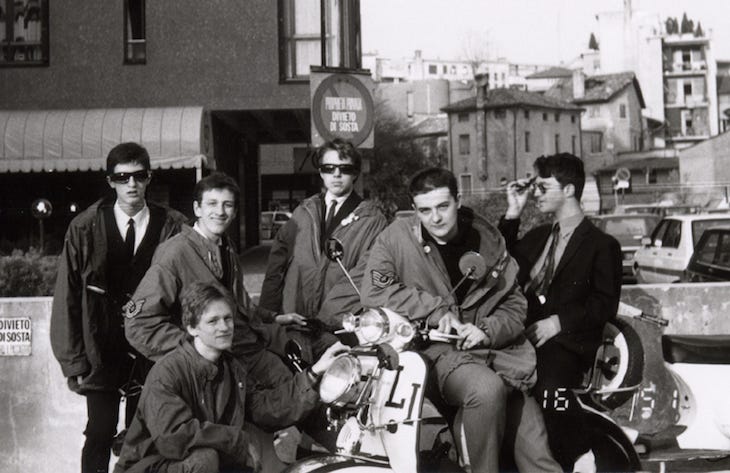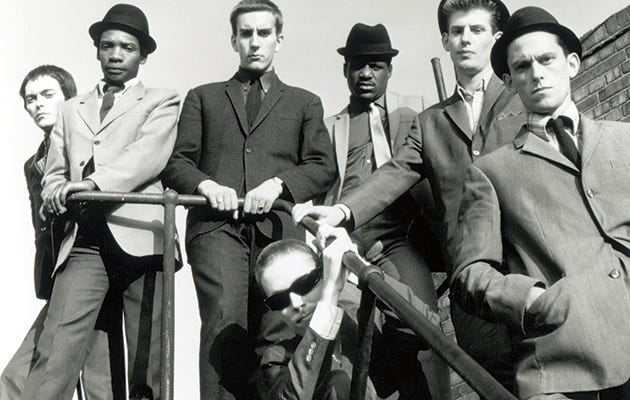Don Letts BBC Documentary: The Story of Skinheads
The True Roots of a Misunderstood Movement
Director: Don Letts
Released: 2016 (BBC Four)
Runtime: Approximately 90 minutes
The Story of Skinheads: A Tale of Unity, Style, and Sound
How Don Letts Reclaims the True Roots of a Misunderstood Movement
In 2016, BBC Four aired a powerful documentary, The Story of Skinheads, directed and narrated by Don Letts — the punk-reggae bridge builder himself. Far from the usual sensational headlines, Letts peeled back the layers to reveal a truth many forgot (or never knew): skinhead culture started as a multiracial, working-class movement grounded in music, fashion, and unity.
This is the real story.
Born From the Mods and the Sound of Jamaica
In the late 1960s, Britain’s streets were alive with mod culture — sharp suits, scooters, rhythm & blues.
But as the decade turned, working-class youth toughened the look. Haircuts got shorter. Boots replaced loafers. A new style was born, rooted in the grit of industrial cities and fueled by the sound of Jamaican ska and rocksteady.
Influences: Jamaican immigrants brought the deep rhythms of Desmond Dekker, The Pioneers, and Toots and the Maytals.
Fashion: Cropped hair, Doc Martens, jeans, braces (suspenders), and Harrington jackets became the skinhead uniform — tough, practical, stylish.
Spirit: It wasn’t about politics. It was about pride: working hard, dressing sharp, and dancing hard.
The early skinheads were Black and white, side by side, united by music, fashion, and class identity.
The Soundtrack of a Generation
Letts' documentary makes it clear: music was the heartbeat of skinhead culture.
Songs like:
Desmond Dekker – "Israelites"
Symarip – "Skinhead Moonstomp"
The Upsetters – "Return of Django"
The Pioneers – "Long Shot Kick De Bucket"
These tracks weren't just background noise — they were anthems of survival, rebellion, and celebration.
At dancehalls and sound system parties, skinheads would skank to the heavy basslines and offbeat rhythms, forging a multicultural bond that defied the racial tensions growing elsewhere in Britain.
The Split: Politics, Punk, and 2-Tone Revival
As the 1970s rolled on, the skinhead scene fractured.
Some skinheads were pulled into the toxic currents of the far right (like the National Front).
Others stayed loyal to the roots of the culture — multiracial, anti-racist, music-driven.
Out of the chaos, a new wave rose:
The 2-Tone ska revival.
Bands like The Specials, Madness, and The Selecter reignited the original spirit of skinhead culture, blending punk energy with ska rhythms and preaching anti-racism from the stage.
Songs like:
The Specials – "A Message to You, Rudy"
Madness – "One Step Beyond"
kept the original fire alive — unity through music, style, and rebellion.
Why This Story Matters Today
Don Letts' The Story of Skinhead is more than nostalgia. It’s a correction of history.
The original skinhead culture wasn’t about hate — it was about shared struggle, street style, and the universal language of bass and drums.
Today, groups like SHARP (Skinheads Against Racial Prejudice) keep that true spirit alive, reminding us that subcultures can be powerful forces for unity — until outsiders twist them.
Letts shows us that reclaiming the real story of skinheads is reclaiming a moment when Black and white working-class kids created something beautiful together.
Final Word
When you hear the word “skinhead,” don’t think of hate.
Think of Desmond Dekker on the turntable.
Think of boots on the dance floor.
Think of a moment in time when music broke barriers — and remember that basslines can build bridges where politics builds walls.






